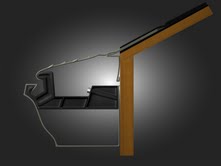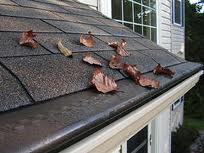The Metal Wizards
The Metal Wizards gutters and downspouts
& The MW patented No Clog cover System
WHY DO YOU NEED NEW GUTTERS
-
Tight and Energy Efficient Construction Can Trap Moisture
Modern homes are designed to conserve or "trap" energy. That's good. But
in the process, such homes can also trap moisture and that can cause
big problems and costly damage. For example, if the soil around the
foundation is soaked from roof drainage water, we can assume that at
least some of that moisture will find its way into the basement, crawl
space or the concrete floor. Some of this moisture will then be absorbed
by the air in the home. If this occurs in the winter time, we can
assume that the warmed air in the home will absorb a great deal of
moisture (warm air can absorb more moisture than cold air). If this
moisture saturated air finds itself into some spaces with cold surfaces -
and it will, then some of this moisture will condense against these
cold surfaces. This can happen at windows, attic plywood and inside
exterior walls, etc.
Condensation at windows may just be bothersome, but in attics and walls it can cause fungal wood-rot and that can be very expensive to repair. A good gutter system helps to control the amount of water and moisture that gets into a structure. And that, in combination with various types of venting system, can prevent the damage from trapped moisture.
-
The Components of a Gutter System
The Roof - - It takes a well designed roof to drain all of the storm water into the gutters or roof drains.
The Gutter - - The gutter (or roof drain in some flat roof) needs
to be designed to capture all the roof drainage and direct the water
into the downspouts.
The Downspouts - - These are the pipes that carry the water from the gutters to the drain system.
The Drain System - - This is the in-ground set of pipes the leads the water away from the structure and into a storm drain or on site system.
-
The Best Way to Maintain Your Gutter System
All roofs and gutter system will need some maintenance, but with proper
planing it is possible to reduce that chore to a minimum. Here is how:
- Keep tree limbs from overhanging you roof! Deciduous trees shed most of their leaves in the fall, most evergreens shed debris all year long!
- When there is debris on the roof, clean the roof with a soft broom or air blower. Don't pressure wash!
- Keep your gutters clean and repair them if they are loose or don't drain toward the scuppers (drains).
- Make sure that all the downspouts are in place and divert all the water into your drain system.
MW has looked at all sorts of "magic" gutter systems and have found very little magic in most any of them. But have now found a system that keeps almost all dirt from clogging gutters, downspouts and drain systems. MW's system is designed to prevent needles, roofing granules, leaves and other debris from clogging gutter systems. MW isn't magic, its just a darn good gutter protection system.
And every 6 months or so, go out during a heavy rain and look at your home from all 4 sides. What you want to see is very little overflow. You want to see that all of the water landing on the roof disappears into your gutter system.
- Rain Barrels
- I like the idea of rain barrels. Well designed rain barrels can capture
roof drainage water. This water can be used for various needs and may
save water. Depending upon the composition and condition of the roof and gutter system, such water maybe quite clean.
But most of the rain barrels I see tend to have a large intake port and a small overflow drain. This means that when the rain barrel is full, the overflow is dumped onto the ground next to the foundation and this defeats the purpose of your gutter system.
- Water and Moisture Damage.....
- Water damage
- is easier to see. We can usually see roof leaks and
wet basements. The damage that can occur is the result of liquid water
soaking into materials that must be kept dry. For example: wood, drywall
and plaster, flooring and furniture. Some types of water damage can be
reversible, for example some wood materials can be dried out and
restored. Other types of water damage result in irreversible conditions.
For example, most drywall surfaces loose their integrity when soaked in
water and may become infested with potentially dangerous fungal
organisms.
- Moisture Damage
- can be much harder to see and often starts in
hidden portions of a structure. Moisture damage is usually occurs warm
and moisture saturated air comes in contact with a cold surface and
condenses on that cold surface. Moisture in air disperses like any gas
and can penetrate most surfaces. Moisture laden air will penetrate walls
and ceilings unless the drywall surfaces in a home are treated with a
vapor barrier paint system or backed by a vapor barrier surface. This
means that the moisture around a foundation may find its way into the
home, saturate the heated air and find its way into all parts of the
structure - even the roofing material.
One of the best ways to prevents water and moisture damage is by installing and maintaining a good gutter system.






